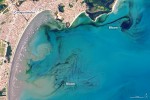
Monday, September 11th, 2017
In early September 2017, ocean scientists noticed something swirling in the waters off the coast of the Brazilian state of São Paulo. The sinuous threads of darkness amid the blue Atlantic Ocean were not caused by oil; they were the result of a phytoplankton bloom. The dark colors are probably high concentrations of dinoflagellates, according
Friday, June 16th, 2017
Teledyne Optech’s Coastal Zone Mapping and Imaging Lidar (CZMIL) system is a critical rapid environmental assessment tool for monitoring natural and man-made disasters. From detecting sewage pipe leaks, mapping oil slicks, and measuring coastline changes after hurricanes, to counting underwater debris in the Great Pacific Garbage Patch, CZMIL excels at identifying and monitoring oceanic environmental
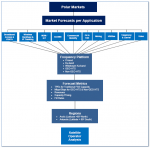
Tuesday, May 30th, 2017
A new report from Northern Sky Research (NSR), Polar Satellite Markets, 2ndEdition, shows more than $1.7 billion in revenue growth generated by the Arctic and Antarctic regions across a range of applications and frequency bands, driven by new bandwidth and capacity opportunities. Maritime demand will drive the growth of this nascent market, resulting in a
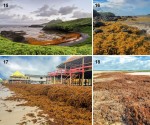
Tuesday, May 2nd, 2017
The Atlantic Ocean’s Sargasso Sea is named for its floating masses of Sargassum algae that are essential to local marine life. However, these drifting “islands” may be shifting to new areas on both sides of the tropical Atlantic Ocean. If they reach land, the massive algal blooms can affect local fisheries and tourism. The authors
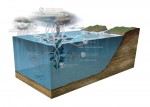
Tuesday, April 18th, 2017
The University of Miami Rosenstiel School of Marine and Atmospheric Science (UM) will deploy 550 SPOT Trace satellite trackers from Globalstar Inc. in its continued research expedition with the Consortium for Advanced Research on Transport of Hydrocarbon in the Environment (CARTHE), which is dedicated to forecasting the fate of oil dispersed into the environment to
Monday, February 20th, 2017
Toulouse – Due to recent and heavy rainfall, the water level of Lake Oroville has drastically increased, reaching a dangerous peak which led to the evacuation of over 100,000 people as a precaution, in case there was a dam failure. The Airbus SPOT 6 and SPOT 7 satellites constantly acquire imagery at 1.5m resolution on
Tuesday, February 7th, 2017
The World Ocean Council (WOC) CEO, Paul Holthus, engaged with stakeholders from business, government, science, environment and other communities at major Arctic events in Tromso, Norway in late January. At the Arctic Business Council Summit, Holthus outlined the WOC initiative to develop Sustainable Development Goal (SDG) targets and indicators particularly relevant to Arctic industries. The
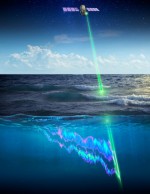
Thursday, January 5th, 2017
A new study using a NASA satellite instrument orbiting Earth found that small, environmental changes in polar food webs significantly influence the boom-and-bust cycles of phytoplankton. These findings, recently published in Nature Geoscience, will supply important data for ecosystem management, commercial fisheries and understanding of the interactions among Earth’s climate and key ocean ecosystems. “It’s